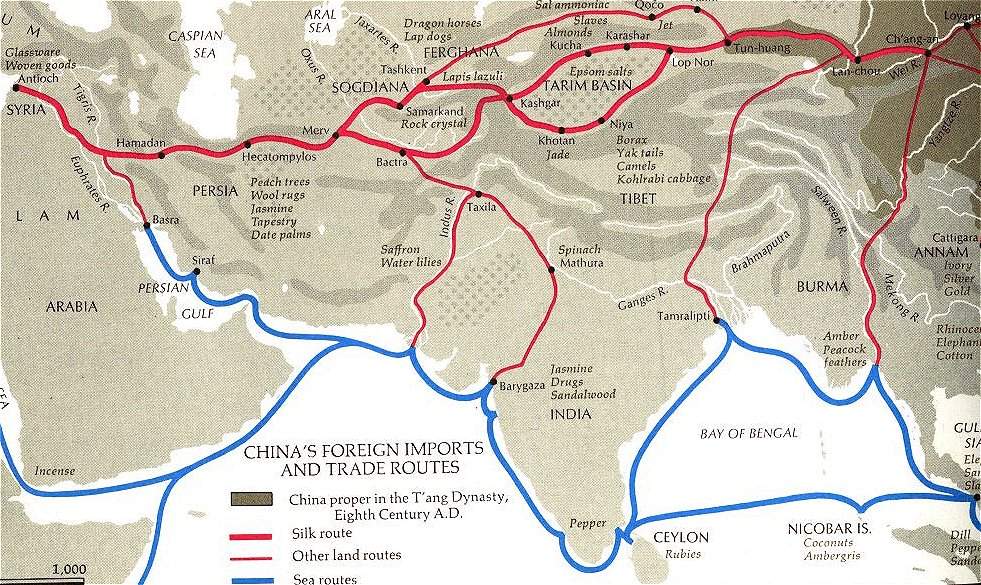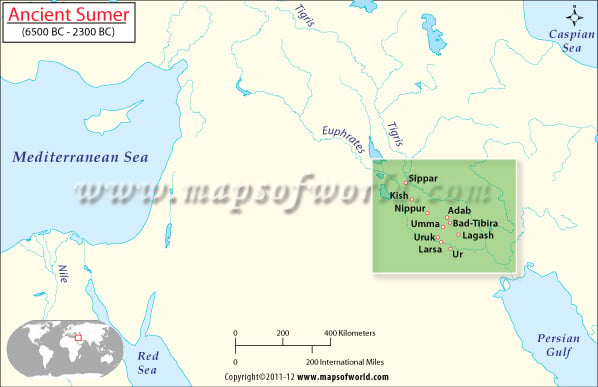Civilizations of the Ancient Near East
Data: 1.09.2018 / Rating: 4.7 / Views: 588Gallery of Video:
Gallery of Images:
Civilizations of the Ancient Near East
The Ancient Near East refers to early civilizations within a region roughly corresponding to the modern Middle East: Mesopotamia (modern Iraq and Syria), Persis, Elam and Media (all three in Western Iran), Armenia, Anatolia (modern Turkey), the Levant (modern Syria, Lebanon, Israel, Palestine, and Jordan), and Ancient Egypt, from the rise of Sumer in the 4th millennium BCE until the region's. Map of the Near East in Ancient Times This map includes some of the geographical locations within the ancient Biblical world. The British Museum describes the Ancient Near East as Mesopotamia, Iran, Anatolia, the Caucasus, the Levant, Egypt, and Arabia. Ancient Near East: Cradle of Civilization Defining Civilization There are many ways to define the word civilization, but all civilizations seem to have some things in common despite the fact that they developed independently in different parts of the world and at different times. Civilizations of the Ancient Near East brings together for the first time in one accessible resource scholarship that was previously scattered in hundreds of monographs and journal articles. The history of the Ancient Near East is complex and the names of rulers and locations are often difficult to read, pronounce and spell. Moreover, this is a part of the world which today remains remote from the West culturally while political tensions have impeded mutual understanding. Ancient Near East Origins of Mankind, Cradle of Civilization civilizations started and how we found these ancient civilizations through Archeology and Anthropology, also the ancient histories. The ancient Near East refers to early civilizations in a region roughly corresponding to the modern Middle East: Mesopotamia (modern Iraq and Syria), Anatolia (modern Turkey), the Levant (modern Syria, Lebanon, Israel, Palestine, and Jordan), as well as Persia (modern Iran), and Ancient Egypt, from. set examines the cultures of the ancient Near East from the Bronze Age (3200 B. ) to the Hellenistic era (325 B. E) and describes the archaeology and the history of each subregion. Ancient Middle East: Ancient Middle East, history of the region from prehistoric times to the rise of civilizations in Mesopotamia, Egypt, and other areas. The high antiquity of civilization in the Middle East is largely due to the existence of convenient land bridges and easy sea lanes passable in. The ancient Near East was the home of early civilizations within a region roughly corresponding to the modern Middle East: Mesopotamia (modern Iraq, southeast Turkey, southwest Iran, northeastern Syria and Kuwait), ancient Egypt, ancient Iran (Elam, Media, Parthia and Persia), AnatoliaAsia Minor an the most prominent building in a Sumerian city was the temple, which was dedicated to the chief god or goddess of the city and often built atop a massive stepped tower. Ancient Near Eastern cultures established the first cities, the earliest code of laws, and the oldest known writing which was used, not for poetry, but for bookkeeping. Learn for free about math, art, computer programming, economics, physics, chemistry, biology, medicine, finance, history, and more. The religions of the ancient Near East were mostly polytheistic, with some early examples of primitive monolatry (YahwismJudaism, Mardukites), Ashurism and Monism. Some Civilizations of the Ancient Near East. Charles Scribner's Sons, New York, 1995. The ancient Near East was home to the earliest civilizations within a region roughly corresponding to the modern Middle East and included Mesopotamia, ancient. The rise of civilization: from early farmers to urban society in the ancient Near East by: Redman, Charles L. Published: (1978) The emergence of civilization: from hunting and gathering to agriculture, cities, and the state in the Near East by: Maisels, Charles Keith. Civilizations of the Ancient Near East brings together for the first time in one accessible resource scholarship that was previously scattered in hundreds of monographs and journal articles. Ancient Civilizations in the Near East Chapter Summary and Learning Objectives. An exploration of Near East ancient civilization lends insight into the development of phenomena such as law. The first civilizations in world history, those of Mesopotamia and Ancient Egypt, are emerging. A succession of great empires the Assyrian, the Babylonian, and now the Persian have dominated the Middle East for the past few centuries. Civilizations of the Ancient Near East is a masterful, innovative work that belongs in most academic and large public libraries. Despite its limitations for reference, most libraries will want to place it in their reference collections because of the lack of any other comprehensive reference work on. Early Civilizations of the Ancient Near East Chapter Summary and Learning Objectives. Use this chapter to explore the belief systems, agricultural practices, trade routes and infrastructures of. World HistoryAncient Civilizations. From Wikibooks, open books for an open world and failing rainfall in the region of the Ancient Near East, caused by a global centennialscale drought. [12 The original copy is kept in the headquarters of the United Nations. After 600 years as a major empire in the Ancient Middle East the Hittites. The first civilizations developed in the Near East. They had a great influence on GrecoRoman culture and had a critical role in the formation of Western culture. The lands of the Near East were inhabited by various peoples. CIVILIZATIONS OF THE ANCIENT NEAR EAST presents this enormously rich world from a variety of perspectives. It describes the physical world of the ancient Near East, evaulates the impact of ancient near eastern civilizations on succeeding cultures, and reconstructs its cultural contexts based on archaeological findings and the deciphering of documents. Civilizations of the Ancient Near East. [Jack M Sasson; History begins in the ancient Near East. While earlier peoples left signs at Stonehenge, on the walls of caves in France it is in the Near East that we first find messages, evidence of the. This barcode number lets you verify that you're getting exactly the right version or edition of a book. The 13digit and 10digit formats both work. Civilizations of the Ancient Near East brings together for the first time in one accessible resource scholarship that was previously scattered in hundreds of monographs and journal articles. The PowerPoint PPT presentation: The Ancient Near East: The First Civilizations is the property of its rightful owner. Do you have PowerPoint slides to share? If so, share your PPT presentation slides online with PowerShow. The history of the ancient Near East civilizations is of particular importance in history, and its importance comes from the influence of the ancient Near East civilizations on the history of the civilizations of the world. This course aims to introduce the history of the Near. Civilizations of the Ancient Near East (Part 6 Economy and Trade, Part 7 Technol See more like this. Civilizations Ancient Near Eas (Civiliations of the Ancient Near East) New (Other) 44. Civilizations of the Ancient Near East Jack M. Sasson, John Baines, Gary Beckman, Karen S. (New York Charles Scribners Sons, 1995) 4 vols. , 449 Superlatives are inadequate to describe this magnificent library of information on the ancient Near East. The Near East is traditionally regarded by archaeologists and ancient historians as the region of southwest Asia, specifically the area encircled by the Mediterranean Sea, the Black Sea, the Caspian Sea, the Red Sea and the PersianArabian Gulf. In modern times this region includes the countries of. Since 1982, the Culture and History of the Ancient Near East series has become a primary forum for studying all aspects of ancient Near Eastern civilizations. Across a chronological and geographical swath, it covers religion, history, language, literature, thought, science, art. Research and teaching in the department focuses on the early civilizations of the Ancient Near East and Egypt. The roots of Western civilization are found no less in the dust of the extinct cultures of Western Asia and of Egypt than in the GrecoRoman culture. The earliest civilization wideunfold in the international, the Sumerians, had a Flood tale. that is hero became into named Ziusudra. beforehand the Babylonians Gilgamesh, beforehand the Enuma Elish, beforehand the Egyptians, beforehand all and sundry. Civilizations of the Ancient Near East. New York: Charles Scribner's Sons, 1995, xxxii 2966 pp. set examines the cultures of the ancient Near East from the Bronze Age (3200 B. ) to the Hellenistic era (325 B. E) and describes the archaeology and the history of each subregion. Languages, religious life, governments, peace and war, commerce and. CIVILIZATIONS OF THE ANCIENT NEAR EAST presents this enormously rich world from a variety of perspectives. It describes the physical world of the ancient Near East, evaulates the impact of ancient near eastern civilizations on succeeding cultures, and reconstructs its cultural contexts based on archaeological findings and the deciphering of documents. Civilizations of the Ancient Near East JACK M. SASSON EDITOR IN CHIEF JOHN BAINES GARY BECKMAN KAREN S. RUBINSON ASSOCIATE EDITORS VOLUME III Charles Scribner's Sons MACMILLAN LIBRARY REFERENCE USA Simon Schuster Macmillan New York Simon Schuster and Prentice Hall International London Mexico City New Delhi Singapore Sydney Toronto Witchcraft. Civilizations of the Ancient Near East is a masterful, innovative work that belongs in most academic and large public libraries. Despite its limitations for reference, most libraries will want to place it in their reference collections because of the lack of any other comprehensive reference work on. Much of the fate of Israel was due to the position of its lands at the crossroads of the ancient world. Bordered on the west by the Great Sea (the Mediterranean) and on the east by the searing Arabian deserts, it lay directly on a virtual land bridge between Egypt and the lands of. Art of the Ancient Near East First thing first. The BBCs How Art Made the World (aired on PBS in America) is a thoughtprovoking fivepart series, of which part 3 The Art of Persuasion is particularly useful for the beginning of an art history survey class. Read the fulltext online edition of Ancient Civilizations: The Near East and Mesoamerica (1979). They use it to open up to the novice the fascinating details of the ancient civilizations of the Near East, India, and Mesoamerica. At the same time they use it to illustrate the intriguing scientific search for what these civilizations held in. Flaten, professor of Western Civilization in the SUNY University System, this course will review the civilizations of Ancient Greece, Rome, and the Near East; the Middle Ages; the Renaissance and Reformation; and early modern Europe. Map of the Ancient Near East The cradle of civilization Some of the earliest complex urban centers can be found in Mesopotamia between the Tigris and Euphrates rivers (early cities also arose in the Indus Valley and ancient China). set examines the cultures of the ancient Near East from the Bronze Age (3200 B. ) to the Hellenistic era (325 B. E) and describes the archaeology and the history of each subregion. Civilizations of the Ancient Near East: v. The Dragon, the Mountain, and the Nations: An Old Testament Myth, Its Origins, and Its Afterlives (Explorations in Ancient Near Eastern Civilizations) 15 Apr 2018. Civilizations of the Ancient Near East is a masterful, innovative work that belongs in most academic and large public libraries. Despite its limitations for reference, most libraries will want to place it in their reference collections because of the lack of any other comprehensive reference work on
Related Images:
- Strap On Sweethearts
- Swamp people season one
- A High Performance Half Wave Dipole Antenna
- Consent the louise
- Festive in death
- Pack virtual dj skin
- The ultimate fighter s20e01
- The narrow road
- Cartel french 2018
- Planes Fire Rescue 2018
- Edwin another spin around the sun
- The witcher cbr
- Naruto Shippuuden 333
- A Son Called Gabriel
- Les 10 commandements
- Le fils a jo
- Ghost mine 1
- Deadwood season 1 2 3
- The mindy project 210
- Center of My World
- Bob sinclar david guetta
- Nl subs the outs
- Then came you
- Ceca idealno losa
- 2
- The mighty thor
- John fahey christmas guitar
- Bugatti super car
- Oek de Jong
- Nat geo investigation
- Disneys Halloween Treat
- The Delinquents Spanish Edition
- In the loop
- Descargar Libro Fantasmas En La Casa Rodante Pdf
- Anatomie et physiologie humaine pdf marieb
- Grade 12 geography geomorphology notes
- Urdu Muhavrat Book Pdf
- Zmodo 16 Channel Dvr Manual
- The settlers 4
- Transformers 2018 1080p yify
- Ice age 4 german
- Flash 2018 web dl
- Josh yr
- Two and a half men mars
- Simulation Lab Roller Coaster Physics Answers
- Jonas brothers live
- Doomsday 1080p ita
- Kin ping meh
- Gateway B2 Students Book Pack 2nd Edition
- The Budapest Protocol
- Bmw R1150r Motorcycle Service Repair Manual Download
- Upton Portrait of a Severnside Town
- Mac video recorder
- The algebra of random variables
- Witches of East End s02e08
- The wire season 3 episode 5
- Chino grande the story of my life
- Party in her
- Shooting and processing hdr photographs
- Tenses 1 put the verb into the correct form present
- Nodelock License Catia V5r20
- Sample Affidavit Of Support Student Visa
- Note burner
- Euro truck 2 v1 8 2 5 crack
- Billy boy arnold soul blues of
- The mindy project vostfr
- Jennifer love hewitt photos
- 2pac Greatest Hits Download Zip Sharebeast
- Boy 10 year
- Chess gm boris alterman
- Tom Clancys Splinter Cell skidrow
- Libro tecnologia 3 eso sm savia
- 1080p hindi 2014 1080p
- Danc dance revolution
- Putting english to work
- Assassin creed multi
- Imaging
- Wonderland How Play Made the Modern World
- Strength training 2018
- 1998 Kawasaki Mule 2510 Manua
- Monday night raw 2018 10 06
- Breast of scoreland 2
- The auction 2018
- Telc Deutsch A2 B1 Modelltest 1
- Hunter hunter 66
- The adventures ford fairlane












